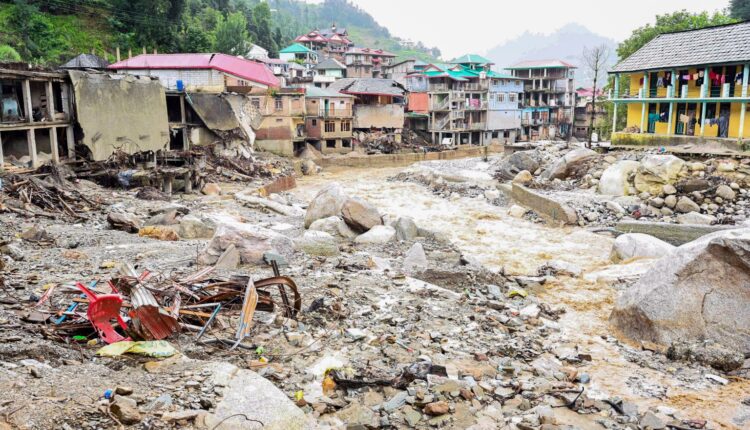Amid ongoing monsoon-induced calamities, Himachal Pradesh continues to grapple with severe disruptions across vital public utilities and a rising death toll.
The State Disaster Management Authority (SDMA) on Sunday released its latest landslide monitoring report, highlighting risk levels across 22 locations in districts such as Mandi, Kangra, Shimla, and Solan, based on real-time monitoring data.
According to the SDMA, a total of 179 people have lost their lives since June 20. This includes 101 fatalities due to rain-related incidents like landslides, flash floods, and cloudbursts, while 78 deaths were reported from road accidents linked to treacherous weather conditions.
As of the evening of August 3, torrential rains have rendered 296 roads impassable, left 134 power distribution transformers non-functional, and disrupted 266 water supply schemes—highlighting the widespread infrastructural damage across the hill state.
Among the worst-affected districts are Mandi, Kullu, and Chamba, which account for a significant share of road blockages and breakdowns in public services. National Highway-505 in Lahaul-Spiti also remains closed due to landslides and flash floods, cutting off vital access routes.
The SDMA report noted that cumulative damage to public property—including roads, power lines, water systems, health infrastructure, and schools—has crossed ₹1,71,495 lakh. Over 88,800 hectares of crops have also been affected, primarily in agriculture and horticulture sectors.
While officials are working around the clock to restore access and resume essential services, continuous rainfall and unstable terrain are hampering rescue and relief operations. The SDMA has advised residents to remain vigilant, avoid travel in vulnerable zones, and strictly adhere to weather advisories, as more rain is expected in the coming days.
Earlier on Sunday, the State Emergency Operation Centre (SEOC) identified risk levels across 22 sites in districts including Mandi, Kangra, Shimla, and Solan. Based on real-time monitoring, two locations—Baldun in Nurpur (Kangra) and Dakshi in Solan—have been classified under ‘High’ landslide risk. Most other zones are categorised as ‘Moderate’ risk.
In Kangra district, Baldun (Nurpur) is flagged as high risk, while Dharamshala and Colony are under moderate risk. In Solan district, both Dagshai and Dakshi are under active surveillance, with Dakshi marked as high risk.
In Mandi district, several sites—including the Griffon Peak series (1–6, 8–10), Sanarli-2, Tattapani, and the Vishwakarma Temple area—are reporting moderate risk. One site, Godha Farm 2, is currently not operational. Meanwhile, a critical site near the Vishwakarma Temple in Mandi is functioning without a dedicated landslide monitoring system and is being assessed solely on weather data, indicating potential gaps in real-time monitoring infrastructure.
The SDMA confirmed that all other functional monitoring units are operational. Local administrations have been alerted, and precautionary advisories will be issued as weather conditions evolve.
Meanwhile, the India Meteorological Department (IMD) has forecast light to moderate rainfall across several parts of the state in the next 12 hours. Isolated heavy rain is also likely in Bilaspur, Hamirpur, Kangra, Kullu, Mandi, Shimla, Sirmaur, Solan, and Una districts.
Himachal Pradesh Governor Shiv Pratap Shukla visited disaster-affected areas of Thunag, Bakshyar, and Janjehli in the Siraj Assembly Constituency of Mandi district on Sunday.
During his visit, the Governor met with affected families and distributed essential relief materials. Speaking in Thunag, he observed that the subdivision had suffered the most damage in the recent natural calamity, with extensive losses to private property, land, and livestock.
Commending the resilience of local residents, Governor Shukla said, “Despite the massive loss, the courage and determination of the people here are truly commendable. While complete compensation for the damage is not possible, every effort will be made to provide assistance at all levels.”



